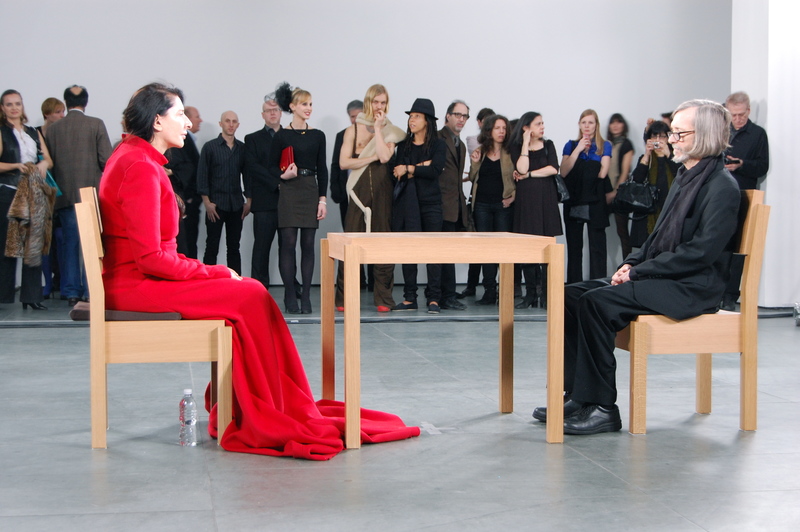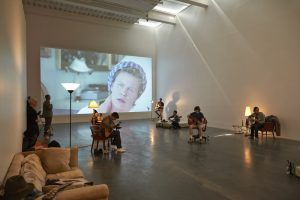On Collecting Performance Art
In the last few decades, contemporary art has evolved in an extraordinary number of ways. Amongst many surprising developments, Performance art has shown that its main means of expression, environments and live actions, are extraordinarily powerful and never cease to fascinate and unsettle viewers. Since their phenomenal rise in the Sixties, thanks to pioneers such as the Japanese Gutai group, Allan Kaprow, George Maciunas and the Fluxus group, performance artists have been creating ephemeral artworks that could only be witnessed or experienced live. Moving far beyond traditionally established art practices, such as painting and sculpture, these artists have been pushing the limits of what it means to display or create a work by compromising the durability or existence of the work itself.
The transient nature of performance art has required institutions, private collectors and the art market to find new ways to respond to the practical issues it raises and therefore support its existence. How can performance art be collected, and how is it monetized by practising performance artists who need a permanent means of living for an ephemeral body of work? More often than not, it is the material “afterlife” of a performance that will find some significant sale value, e.g. props used, or documentary material. American artist Vito Acconci, an early experimenter in Performance art, systematically documented his performances, often happening on the streets or in small gallery contexts. The work Will (1971), consisting of matted materials and photos, offers a recollection of lived moments through a physical display of documentary materials.
The immaterial character of performative work inevitably reflects on the market value of works by performance artists, as the objects are perceived more as “documents” relating to a work, rather than actual artworks. Marina Abramović, possibly the most famous living performance artist, documents her performances with photographic prints. Their values range from $25,000 to $500,000 – significantly less than comparable works by artist of similar importance and notoriety producing “material” works. While Abramović’s visibility is considerable, and her fee for performing The Artist is Present at MoMA in 2010 was $100,000, her financial success is not comparable to the one of artists producing material works.


Marina Abramović, The Artist is Present, 2010, Museum of Modern Art
Some contemporary art museums have been able to adapt to performance art’s ephemerality by commissioning performance works. For instance, Erwin Wurm’s One Minute Sculptures (1996 – present), a series of instructions given to audience members to perform poses with props, has successfully been implemented for short periods of time at SFMoMA and most recently at Tate Modern. In other instances, it is not possible to collect the work in form of documentary material due to the will of the artist himself. Emblematic is the case of the British-German artist Tino Seghal, whose performance works are meant to be documented only in the viewer’s memory. Along with more than 30 other performance works, in 2008 MoMa has acquired in form of a purchase contract his work Kiss (2003) for $70,000. Inspired by influential artists such Constantin Brancusi, Jeff Koons and August Rodin, the Kiss involved two interpreters re-enacting intimate embraces depicted in their works.
Yet other solutions are arising to accommodate the transient essence of performance art, sometimes in the form of a “purchase of services”. In 2013 the online auction house Paddle 8 arranged for the performance Icelandic artist Ragnar Kjartansson to perform Sad, sad, sad (2013) a one-time, two-hour concert of sad songs, anywhere in the world. With a starting bid of $36,000 and the requirement from the purchaser to provide travel, accommodation and a piano for Kjartansson and his band, the price was high but also justifiable by art market standards. As well as buying a unique experience, the buyer also had the opportunity to document the entire performance for their material art collection.


Installation view, Ragnar Kjartansson, Take Me Here By The Dishwasher: Memorial For A Marriage, The New Museum, New York 2014. Photograph by Benoit Pailley. Courtesy The New Museum.
If the commercial and institutional art world have been seeking new ways to deal with performance art, it seems essential also for innovative art market platforms to continue embracing this challenging form of art and its peculiarities, providing a new channel to collect it and support artists. Only through promoting the value of its documentation, as well as through creating more opportunities to support new commissions, the art world will allow performance art to flourish further in the future.
